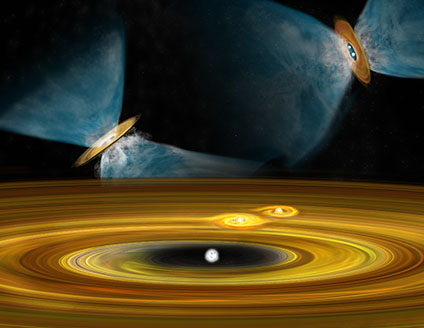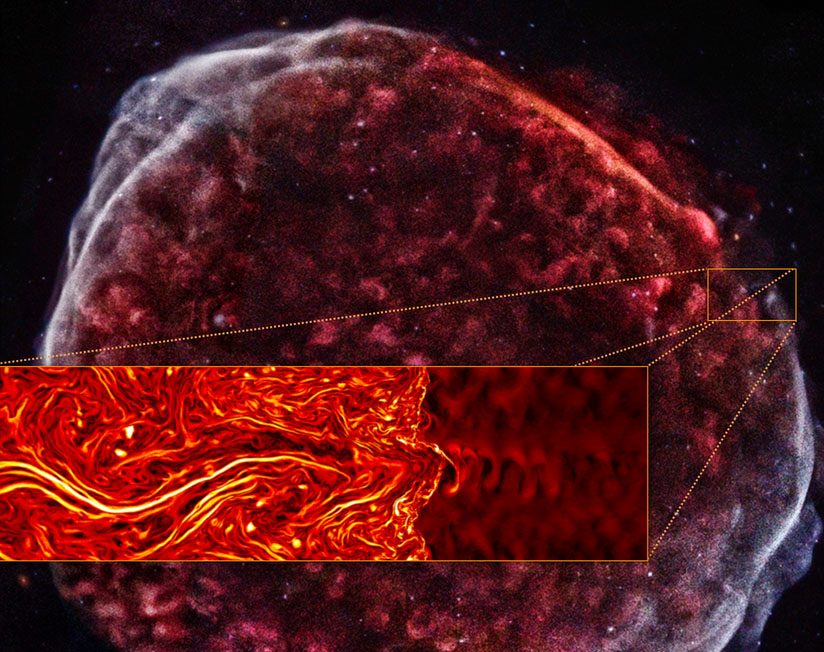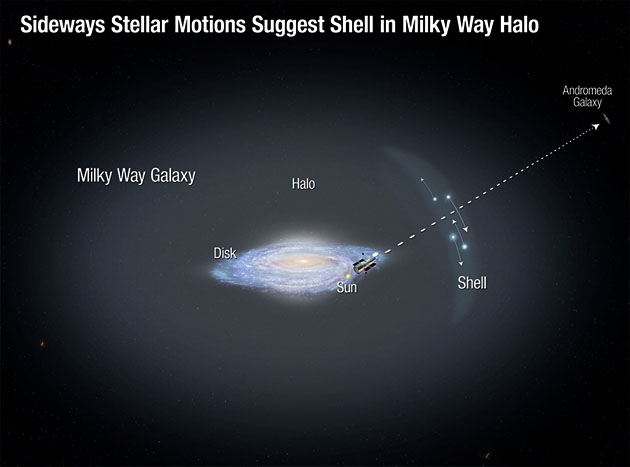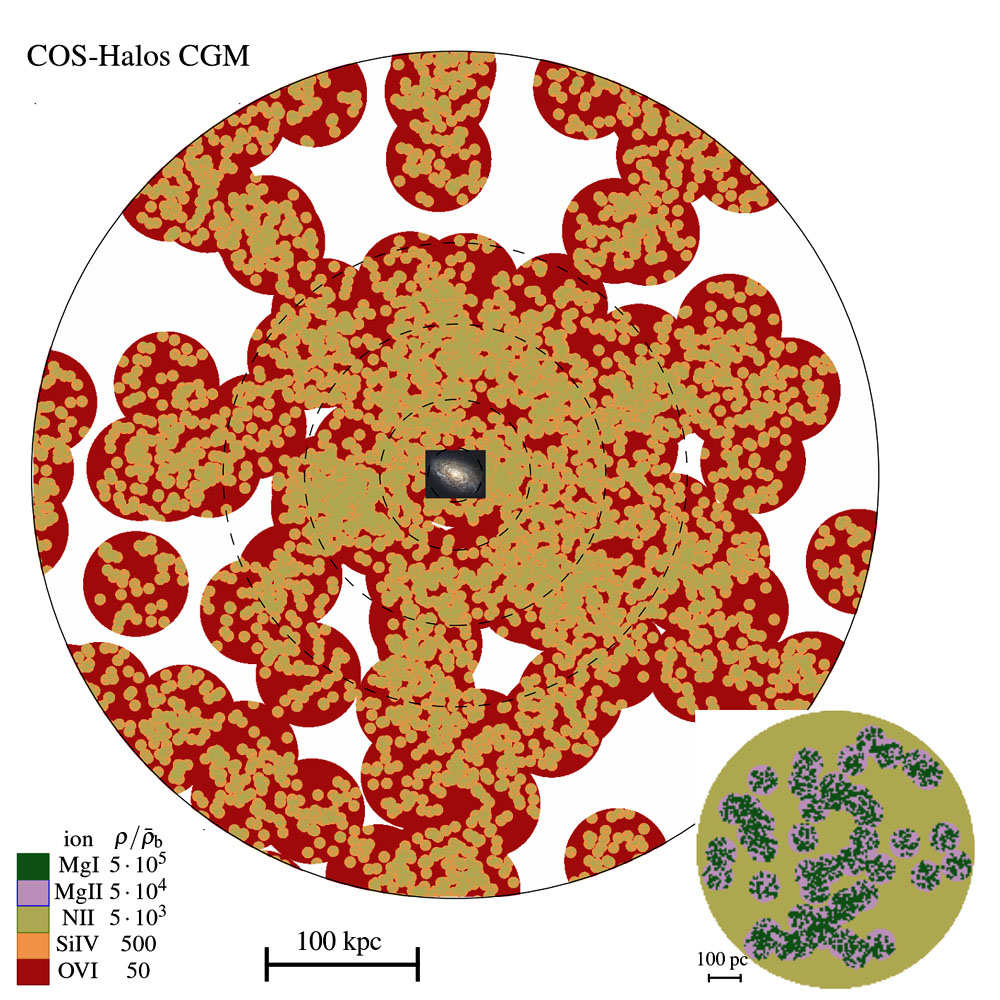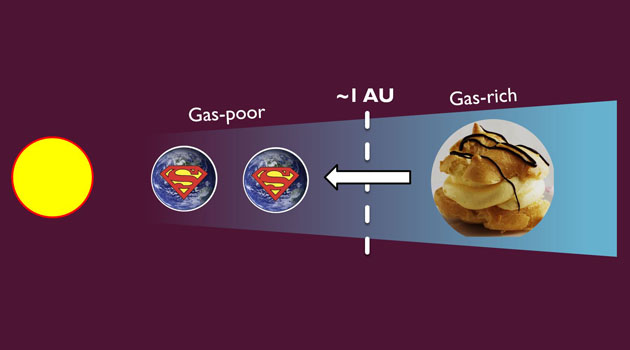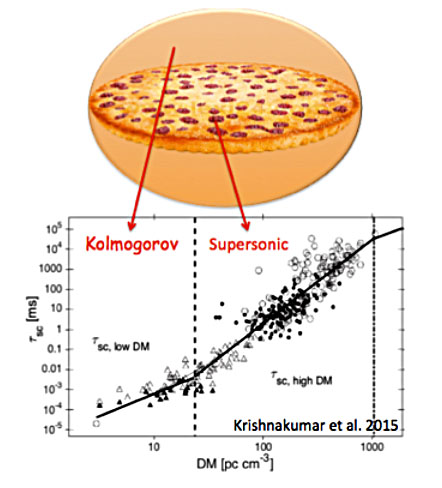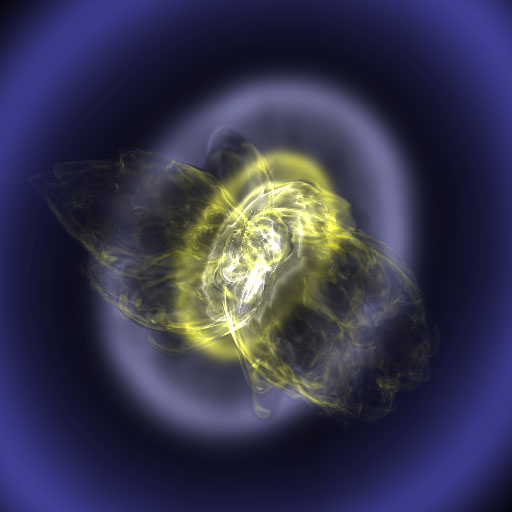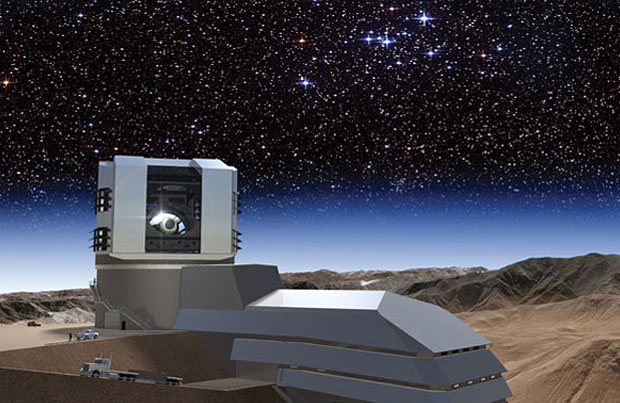 |
 |
 |
 |
 |
 |
 |
 |
 |
 |
 |
 |
|
Talks & Events
|
Astro Tuesday Series: 2016
Toward Understanding the Formation of Proto-planetary Disks and Multiple Star Systems Proto-planetary disks are thought to form early in the star formation process due to conservation of angular momentum. These disks are the future sites of planet formation, but may also be the sites of binary/multiple star formation if the disk is gravitationally unstable. However, theory and simulations have suggested that the formation of large, massive disks may be difficult due to the removal of angular momentum by magnetic fields. Observations are now sensitive enough to test these predictions, and we identified the first Keplerian disk around the youngest class of protostar. Moreover, ALMA observations are have uncovered new Keplerian disks, in addition to enabling their molecular content to be examined. At the same time, we are using data from a large VLA survey to transform our knowledge of protostellar disks and multiple star systems at spatial resolutions of ~15 AU. We have identified new protostellar disk candidates that exhibit evidence for dust growth to ~cm-sizes and radial drift already having occurred in the protostellar phase. Thus, magnetic fields may not strongly suppress the formation of disks > 10 AU in many cases. We have also discovered closer multiple systems than ever before, finding strong evidence for a bimodal distribution of protostar companion separations. This is suggestive of distinct mechanisms for multiple star formation acting on different scales. Finally, we also see indications of evolution in the separation distribution for younger protostars relative to those that are more-evolved. These results open the door to expanded multiplicity and disk surveys to determine if the initial trends we find are robust. New Insights on the Origin of Cosmic Rays I present the results of large kinetic (particle-in-cells) plasma simulations of particle acceleration at non-relativistic collisionless shocks, which in particular allow a first-principles investigation of diffusive acceleration at the blast waves of supernova remnants, the most prominent sources of Galactic cosmic rays (CRs). Ion acceleration efficiency and magnetic field amplification are obtained as a function of the shock properties and compared with theoretical predictions, multi-wavelength observations of individual remnants, and in-situ measurements at heliospheric shocks. Moreover, I outline an original mechanism (the "espresso mechanism") for the acceleration of nuclei up to ~10^20eV in the relativistic jets of powerful active galactic nuclei. The combination of the “supernova-remnant paradigm” for the origin of Galactic CRs and the "espresso" mechanism provides a unified description of the spectrum and the chemical composition of CRs over more than 11 orders of magnitude in energy. Continuing the Legacy of Supernova Cosmology Type Ia supernovae (SNe Ia) are superb distance indicators and are used to map the expansion history of the Universe. In the last millennium, astronomers used observations of SNe Ia to find that the Universe's expansion is currently accelerating. This discovery resulted in the Nobel Prize for Physics in 2011. Since this initial discovery, we have used SNe Ia to loosely constrain the nature of "dark energy," which drives the accelerated expansion. To improve our dark energy constraints beyond our current basic understanding, we must design new and better SN surveys. I will present the Foundation Supernova survey, a new high-fidelity, low-redshift (z < 0.1) SN survey started in 2015 that will replace the current heterogenous low-redshift sample and reduce the (currently) largest uncertainties for SN cosmology. I will describe the survey, our implementation, and first results. I will also discuss the next major leap in SN cosmology, WFIRST, which will launch in about a decade. I will present the first simulations of the WFIRST SN survey and make some suggestions for how to further improve this mission. Between the Foundation survey, WFIRST, and other surveys, SNe Ia will continue to be a premier cosmological probe, continuing the legacy started decades earlier. Rethinking Galactic Architecture: Clues from Satellites and Destroyed Dwarfs The cannibalistic nature of the Milky Way galaxy leads to the continuous capture and destruction of lower mass, dwarf galaxies. The remains of destroyed dwarfs are splayed out in a diffuse stellar halo, while the "survivors" comprise the satellite population that orbits the Milky Way. These halo populations provide a unique opportunity to decipher the accretion history of the Milky Way with a level of detail that cannot be achieved in any other galaxy. I will discuss current and future projects that aim to decipher the nature of the halo's building blocks. Observational studies of number counts and chemical abundances of halo stars suggest that the halo is dominated by relatively massive accretion event(s), in qualitative agreement with the predictions of numerical simulations. I will discuss an ongoing project utilizing multi-epoch HST photometry and Keck spectroscopy that will provide a more quantitative analysis using distant halo stars viewed in “7-dimensions”. I will also discuss the significance of group infall onto Milky Way mass halos, and the latest observational evidence for associations between satellite dwarfs and/or substructures in our Galaxy. ChalkTalk
ChalkTalk
ChalkTalk
ChalkTalk
ChalkTalk
Modeling Galaxies in the Era of Precision Cosmology: A community-driven approach with Halotools Models of the galaxy-halo connection provide insight into galaxy formation physics and can be exploited to tightly constrain cosmology with observations of large-scale structure. However, theoretical predictions of conventional formulations of these models are plagued by persistent systematic errors, for example due to uncertainty associated with "assembly bias". As galaxy surveys continue to provide ever more precise information on large-scale structure measurements, these theory-level systematics will place a ceiling on the reliability of the conclusions that can be drawn from traditional galaxy-halo techniques. In this talk, I'll describe how the open source Halotools package provides an object-oriented python framework designed to help remedy assembly bias and other systematics associated with nonlinearities in structure formation. Halotools is analogous to Boltzmann codes such as CMBFAST, CAMB and CLASS, but instead provides an optimized pipeline for populating mock galaxy catalogs into both low- and high-resolution simulations. I will conclude by describing how Halotools can be used to provide robust constraints on galaxy formation and help prepare the field of cosmology for the arrival of Stage IV dark energy experiments. Following the talk there will be a tutorial on the Halotools package. ChalkTalk
ChalkTalk
ChalkTalk
Fire and Ice: The role of energetic processes in the cold chemistry of planet-forming circumstellar disks Planets form from the coldest, T<200 K, and densest parts of circumstellar disks around young stars. During this phase, the active nature of the star subjects the disk to relatively high fluxes of UV and X-ray photons and energetic particles. Simultaneously, the local star-forming environment may provide additional external UV and/or radioactive pollutants from recent massive stellar populations. These energetic agents play a vital role in 1) setting protoplanetary disks' turbulent and thermal physics, and 2) regulating the important gas and grain surface chemical reactions, impacting the overall disk molecular composition. Consequently, chemistry can be used to "map out" the important ionizing processes in disks using submillimeter molecular emission. Using data from the Submillimeter Array and Atacama Large Millimeter/Submillimeter Array, we have put strong constraints on the global ionization levels in the disk of TW Hya, constraining the cosmic ray rate to a value two orders of magnitude below the dense interstellar value. This result has major consequences for the active disk chemistry and, in particular, the chemistry of water and organic material. Finally, I will discuss future directions aiming to spatially resolve ionization structure with ALMA and its time variability. ChalkTalk
ChalkTalk
New Constraints on the Acceleration of AGN-driven Galactic Winds and on the Density Structure of the CGM A vital ingredient in our theoretical understanding of AGN-driven galactic winds is the nature of the physical mechanism which accelerates them, such as radiation pressure on dust grains or the ram pressure of an expanding hot gas bubble. I will demonstrate that the nature of the acceleration mechanism can be constrained from the ratios of emission lines which originate from the cool (T~10^4K) gas illuminated by the AGN. I will then show that observed line ratios in UV-selected quasars suggest that radiation pressure dominates at all scales (0.1 pc -- 10 kpc). I will demonstrate that this result is apparently in conflict with the large momentum outflow rates measured by many previous studies, and discuss how this conflict might be resolved. In the second part of my talk I will argue for a new phenomenological model for the T~10^4K circum-galactic medium (CGM), where the cool CGM spans a large range of gas densities, and small high-density clouds are hierarchically embedded in large low- density clouds. I will then constrain the relation between gas density and physical size, or the "density structure", using ionic column measurements from the COS-Halos survey of low-redshift ~L* galaxies. I will show that this density structure is inconsistent with self-gravity, and thus its physical origin is unclear. I will also present a 3D model of the cool CGM based on our results, which can provide a benchmark for the CGM structure in hydrodynamic simulations. ChalkTalk
ChalkTalk
ChalkTalk
ChalkTalk
The Late-Time Formation and Dynamical Signatures of Small Planets The Kepler mission has established that approximately half of all Sun-like stars harbor planets. Of these, close-in super-Earths are the most common. Understanding the origin of super-Earths can lend us insight into the default pathway of planet formation. The riddle posed by super-Earths is that they are not Jupiters: their core masses are large enough to trigger runaway gas accretion, yet somehow super-Earths accreted atmospheres that weigh only a few percent of their total mass. I will show that this puzzle is solved if super-Earths formed late, in the inner cavities of transitional disks. Super-puffs present the inverse problem of being too voluminous for their small masses. I will show that super-puffs most easily acquire their thick atmospheres as dust-free, rapidly cooling worlds outside 1 AU, and then migrate in just after super-Earths appear. Small planets may remain ubiquitous out to large orbital distances. I will demonstrate that the variety of debris disk morphologies revealed by scattered light images can be explained by viewing an eccentric disk, secularly forced by a planet of just a few Earth masses, from different observing angles. The farthest reaches of planetary systems may be perturbed by eccentric super-Earths. ChalkTalk
ChalkTalk
The Power Law in the Radio Sky As shown by overwhelming observational evidence, the interstellar medium (ISM) is turbulent and magnetized. The ubiquitous magnetized turbulence in the ISM connects the physical processes happening on local small scales (~10^7 cm) to global large scales (~ 100 pc), through the power-law spectrum of turbulence. The turbulent spectrum has been measured in both the warm ionized medium, known as "the big power law in the sky", and cold neutral medium. The power-law nature of the interstellar turbulence is widely imprinted in fluctuating observables in the ISM. An in-depth understanding of the power-law statistics of magnetized turbulence is the key to unlocking many mysteries in radio observations that have been puzzling for decades. These observables in turn provide valuable information on interstellar turbulence and density distribution in a straightforward way. In the light of radio observations of Galactic pulsars, I will show you what I have seen in our room, i.e., the Galactic ISM, and in the fast radio burst's room, extragalactic ISM. The Destructive Birth of Massive Stars and Massive Star Clusters Massive stars play an essential role in the Universe. They are rare, yet the energy and momentum they inject with their intense radiation fields and stellar winds into the interstellar medium (ISM) dwarfs the contribution by their vastly more numerous low-mass cousins. These mechanisms can halt accretion onto massive stars and limit star formation in massive star clusters (MSCs), which can host thousands of massive stars. For stellar winds, I discuss how we can use observations to constrain a range of kinetic energy loss channels for the shock-heated gas from stellar winds in MSCs. I demonstrate that the kinetic energy injected by stellar winds in MSCs is not a significant contributor to stellar feedback for young MSCs. I argue instead that radiation pressure is likely the dominant feedback mechanism in massive star and MSC formation. Therefore detailed simulation of their formation requires an accurate treatment of radiation. For this purpose, I have developed a new, highly accurate hybrid radiation algorithm that properly treats the absorption of the direct radiation field from stars and the re-emission and processing by interstellar dust. With this new method, I performed a suite of three-dimensional radiation-hydrodynamic simulations of the formation of massive stars and MSCs. For individual massive stellar systems, I find that mass is channeled to the massive stellar system via gravitational and Rayleigh-Taylor instabilities. I will also present a simulation of the formation of a MSC from the collapse of a dense, turbulent, magnetized million solar mass molecular cloud. I find that the influence of the magnetic pressure and radiative feedback slows down star formation. These early results suggest that the combined effect of turbulence, magnetic pressure, and radiative feedback from massive stars is responsible for the observed low star formation efficiencies in molecular clouds. ChalkTalk
Systematic Serendipity: Novel Discoveries in Astronomical Surveys As of last year, the Large Synoptic Survey Telescope (LSST) has begun construction on the summit of Cerro Pachon. As the top-rated flagship for ground-based astronomy in the next decade, LSST will provide an unprecedented dataset of 37 billion objects observed in both space and time. The time domain aspect of LSST is an especially promising source of new discoveries: the main survey is expected to generate new samples of thousands of supernovae, cataclysmic variables, stellar flares, and regular variables, amongst other denizens of the time-domain zoo, each one of which will generate an "alert" within 60 seconds of observation. Sorting amongst these transient and variable objects poses a challenging task: transient events of interest must be identified and prioritized, so that valuable follow-up resources (which are easily saturated by the volume of LSST alerts per night) are deployed on the events with the most potential to provide transformative understanding of particular phenomena. For LSST, this task is of course at a beyond-human scale, requiring sophisticated machine learning algorithms to provide real-time characterization and prioritization. However, another challenge looms under the surface of the approaching flood of data: how can truly novel phenomena be recognized and discovered in large datasets? In this talk, I will discuss methods and applications of finding anomalous data in astronomical datasets. Anomaly identification is a powerful means to both discover novel phenomena, as well as to identify problematic data so that it may be cleaned from the database. Lastly, hunting down anomalies is an exciting way to engage citizen scientists in astronomical discovery, whose efforts have repeatedly demonstrated the power of the crowd in uncovering previously-unnoticed phenomena. |

